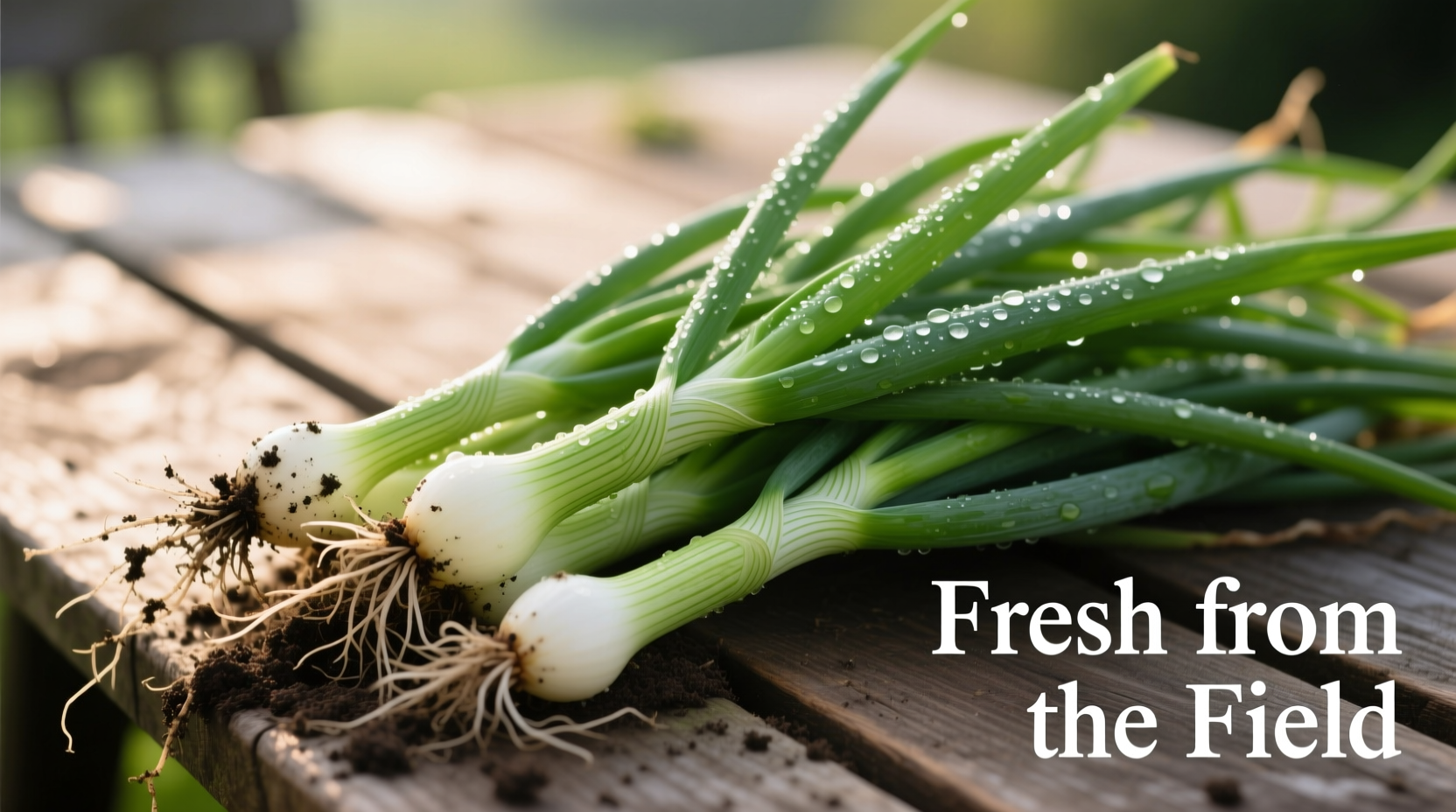Discover why professional chefs and home gardeners increasingly favor welsh onions for their reliable flavor profile and cultivation advantages. This comprehensive guide reveals essential identification techniques, optimal culinary applications, and practical growing tips you won't find in generic onion guides.
What Exactly Are Welsh Onions?
Despite their name, welsh onions have no connection to Wales. The term likely derives from the German "welsch" meaning "foreign" or "non-Germanic." Botanically classified as Allium fistulosum, these perennial alliums differ fundamentally from common onions (Allium cepa) through their complete lack of bulb development.

Unlike scallions (immature Allium cepa), welsh onions maintain their hollow, cylindrical green stems throughout their lifecycle. This structural characteristic creates a distinctive crisp texture that holds up remarkably well during cooking while delivering a more nuanced flavor profile than standard green onions.
Key Differences From Other Allium Varieties
| Characteristic | Welsh Onion | Green Onion/Scallion | Chives |
|---|---|---|---|
| Botanical Name | Allium fistulosum | Allium cepa var. aggregatum | Allium schoenoprasum |
| Bulb Formation | None | Small bulb | None |
| Stem Structure | Hollow, cylindrical | Solid lower portion | Hollow, thinner |
| Flavor Intensity | Mild, sweet | Sharper | Delicate |
| Perennial Growth | Yes | No | Yes |
Culinary Applications Across Global Cuisines
Professional chefs value welsh onions for their remarkable versatility. In Japanese cuisine, they're essential for negi dishes and miso soup garnishes. Korean cooks use them extensively in pa-based kimchi and pancake batters. Chinese chefs incorporate them into dumpling fillings and stir-fries where their heat stability outperforms regular scallions.
When cooking with welsh onions, remember these professional techniques:
- Use the entire plant - both green and white portions offer distinct flavor profiles
- Add white sections early in cooking for flavor foundation
- Reserve green portions for finishing touches to maintain vibrant color
- Try grilling whole stalks for smoky depth in summer dishes
Growing Welsh Onions: A Gardener's Advantage
Unlike traditional onions requiring annual replanting, welsh onions establish permanent garden beds. The USDA Agricultural Research Service confirms their hardiness in zones 3-10, with documented cases of productive plants lasting over five years with proper care.
For optimal growth:
- Plant in well-drained soil with consistent moisture
- Space plants 6 inches apart for continuous harvesting
- Harvest by cutting outer stalks, allowing inner growth to continue
- Divide clumps every 2-3 years to maintain productivity
Nutritional Profile and Health Benefits
According to USDA FoodData Central, welsh onions provide significant nutritional advantages over common onions. A 100g serving delivers 114% of your daily vitamin K requirement, 32% of vitamin C, and notable amounts of calcium and iron. Their continuous harvest cycle means garden-fresh welsh onions maintain peak nutrient density longer than bulb onions stored for months.
Their sulfur compounds, while milder than regular onions, still offer documented cardiovascular benefits. Research published in the Journal of Agricultural and Food Chemistry confirms welsh onions contain unique organosulfur compounds that support healthy inflammation response.
Perfect Substitutes When Welsh Onions Aren't Available
While nothing replicates welsh onions' exact profile, these substitutions work in specific applications:
- For raw applications: Chives provide similar mildness but lack structural integrity
- For cooking: Leeks offer comparable texture but require longer cooking time
- Emergency substitute: Double the green portion of regular scallions
Remember that proper substitution depends on your specific recipe requirements. For delicate Asian dishes, maintaining the hollow-stem characteristic proves crucial for authentic texture.











 浙公网安备
33010002000092号
浙公网安备
33010002000092号 浙B2-20120091-4
浙B2-20120091-4